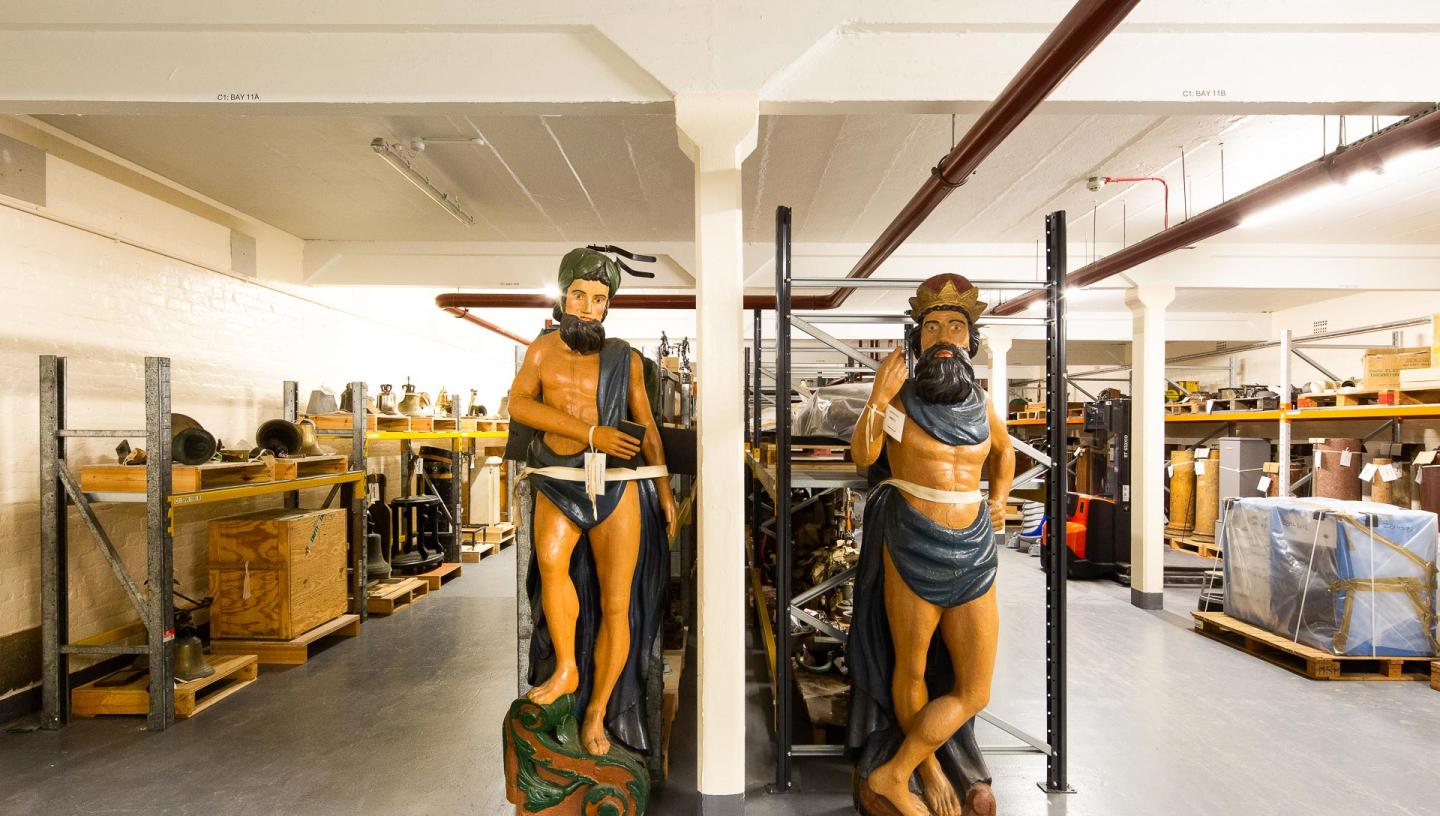
Time at sea is by its very nature isolating, and even on a very short voyage a strong sense of community, albeit a temporary one, is often created. Traditions, ritual and celebrations are an important part of ensuring unity and staving off boredom.
Blowing off steam
Chief engineer and photographer Cezar Gabriel, as featured in the Exposure, Lives at Sea photography exhibition, discusses the importance of seafarers having the ability to ‘let off steam’ when at sea. Celebrations are an important part of maintaining morale on ships.
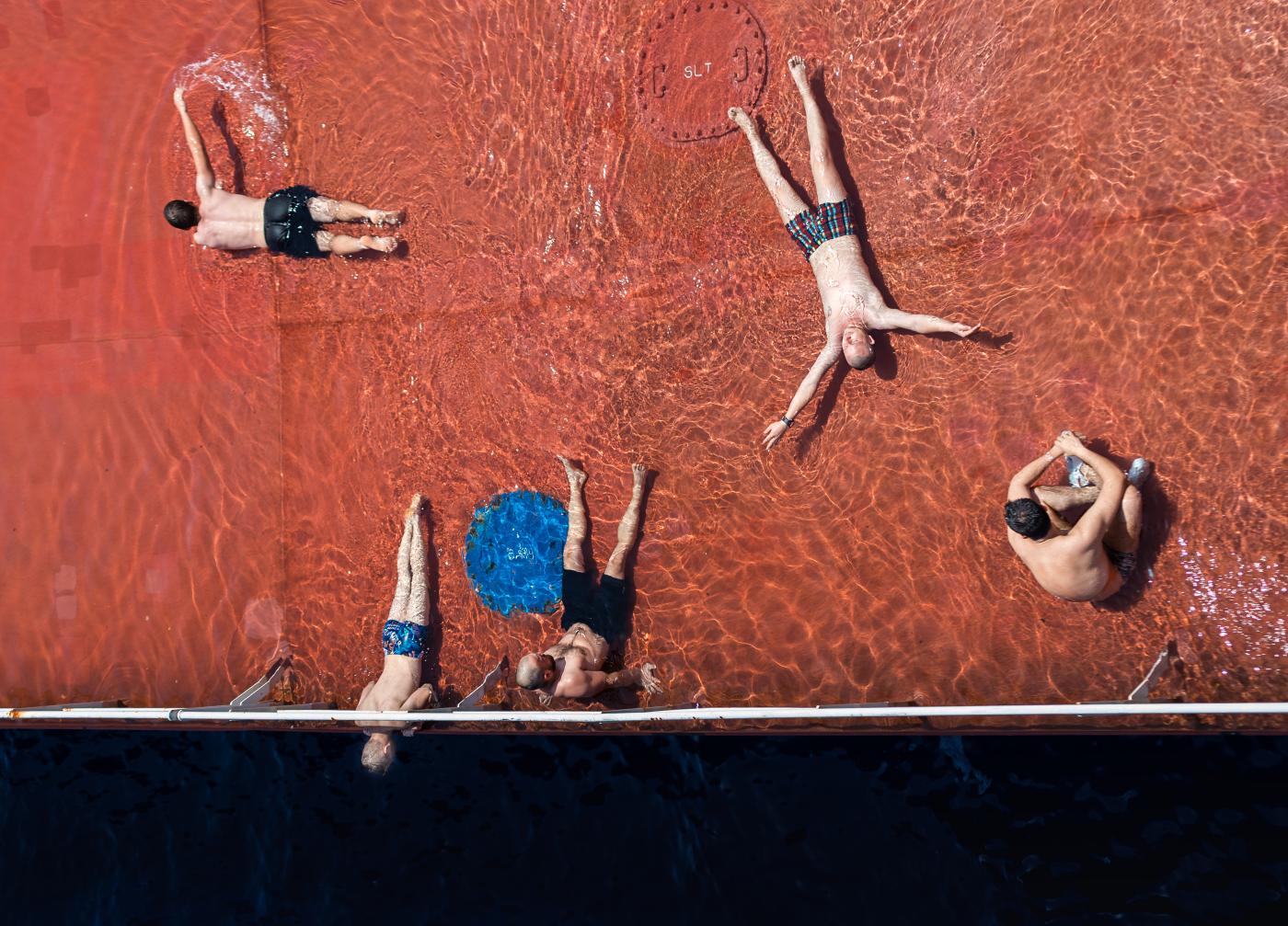

Sea Baptism
Perhaps one of the best known and longest enduring traditions is the initiation ceremony of ‘Crossing the line’ or ‘Sea Baptism’, which takes place when a ship crosses the equator.
The first recorded descriptions are from around 400 years ago and its origins remain hazy. There are some suggestions that it formed an important test to ensure the men you were sailing with, and thus dependent upon, were able seafarers. A different interpretation is much more steeped in superstition – appeasing Neptune the god of the sea before ‘crossing the line’.
As with any long-standing tradition, there are a wide variety of interpretations; however, some fundamentals stay the same. The sailors who have not yet crossed the equator before must be tried before the court of Neptune, Roman god of the sea, and be shown to be worthy seafarers.
There is generally full immersion in seawater, either in the sea or a container on the ship – hence the term ‘sea baptism’ (although some accounts just recall copious amounts of water are just poured over the inductee).
A variety of names for the novice sea-goer exist, including tadpoles, griffins and pollywogs (American slang for tadpole). A wide variety of characters can also be included in the festivities: 19th and 20th century versions often include a barber, with initiates having their facial and head hair unevenly shaven. More recently, an oversized cardboard prop cut-throat razor is sometimes used.

A straight razor that was used on board the Windsor Castle cruise ship for the crossing the line ceremony. The handle is made of softwood, while the blade is made of brass. Inscribed on the blade are the words "VASCO, FOR FREEING FACES OF FUNGUS".
Male seafarers dressed in women’s clothes is also a common feature, with Neptune’s consort Salacia, goddess of the sea, traditionally being represented.
More recently a nurse or mermaid may feature. The increase of women on ships does not seem to have significantly changed the crossing of the line ritual.
Rank and class
Although any sailor crossing the equator would be included in this task, it does seem that higher ranking sailors or passengers would be spared the most severe tests.
In the case of Joseph Banks in 1768, on the exploratory voyage of Captain Cook's Endeavour, high-ranking or influential members of the crew were spared inclusion, including the cook, captain and Banks himself. Unusually the cats and dogs on the voyage were included in questioning whether they had previously crossed the equator!
From his diary it is clear that naturalist Charles Darwin was teased about the potential ordeal upon joining the now-famous voyage on the Beagle. On 29 October 1831 he wrote, ‘They amused themselves with giving most terrific accounts of what Neptune would do with me on crossing the Equator'.
Although it seems he did not enjoy this rite of passage, he did acknowledge that he got off lightly:
We have crossed the Equator, & I have undergone the disagreeable operation of being shaved. About 9 oclock this morning we poor “griffins” [inexperienced sailors], two & thirty in number, were put altogether on the lower deck. — The hatchways were battened down, so we were in the dark & very hot. — Presently four of Neptunes constables came to us, & one by one led us up on deck. — I was the first & escaped easily: I nevertheless found this watery ordeal sufficiently disagreeable. — Before coming up, the constable blindfolded me & thus lead along, buckets of water were thundered all around; I was then placed on a plank, which could be easily tilted up into a large bath of water. — They then lathered my face & mouth with pitch and paint, & scraped some of it off with a piece of roughened iron hoop. —a signal being given I was tilted head over heels into the water, where two men received me & ducked me. —at last, glad enough, I escaped. — most of the others were treated much worse, dirty mixtures being put in their mouths & rubbed on their faces. — .”
Charles Darwin, 17 February 1832)
Neptune's trials
Historic crossing the line ceremonies would in some circumstances be considered as 'hazing' today, featuring violence towards or humiliation of often teenage recruits, with reports of injury or even death.
Fortunately, today crossing the line has evolved into a much more symbolic test.
Following a notorious ceremony on Royal Australian Navy submarine HMAS Onslow in 1995, in which abusive practices were recorded, the Australian Navy now follows a prescriptive format to ensure the wellbeing of those involved. However, other organisations, including the California State University Maritime Academy, have banned the practice entirely.
More dangerous elements, such as crawling through the bowels of the ship, have been replaced with the artificial creation of sludge created from food stuffs and spare piping to replicate the challenge.
Cruise ships
With the increase in the cruise ship industry, post-war crossing the line became an activity for the entire family, with crews performing an almost pantomime-esque show involving the passengers.
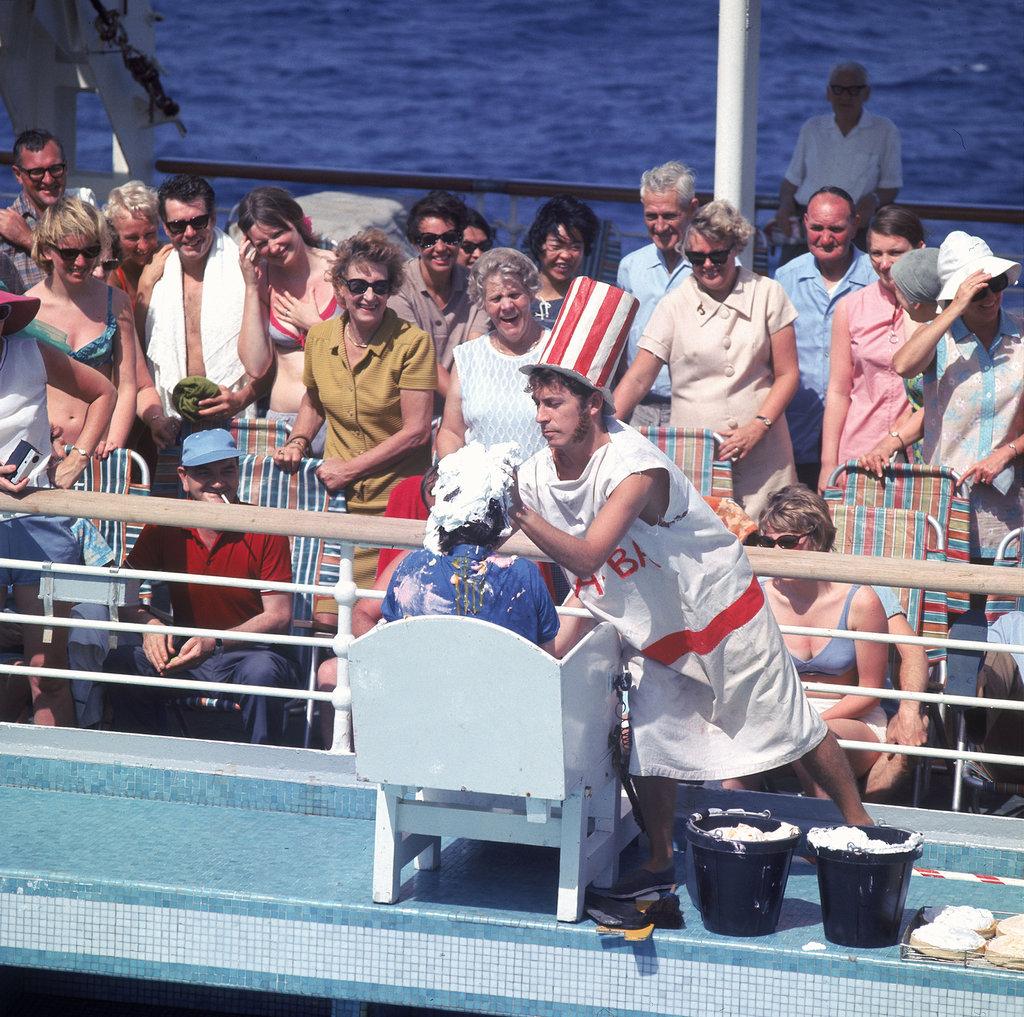
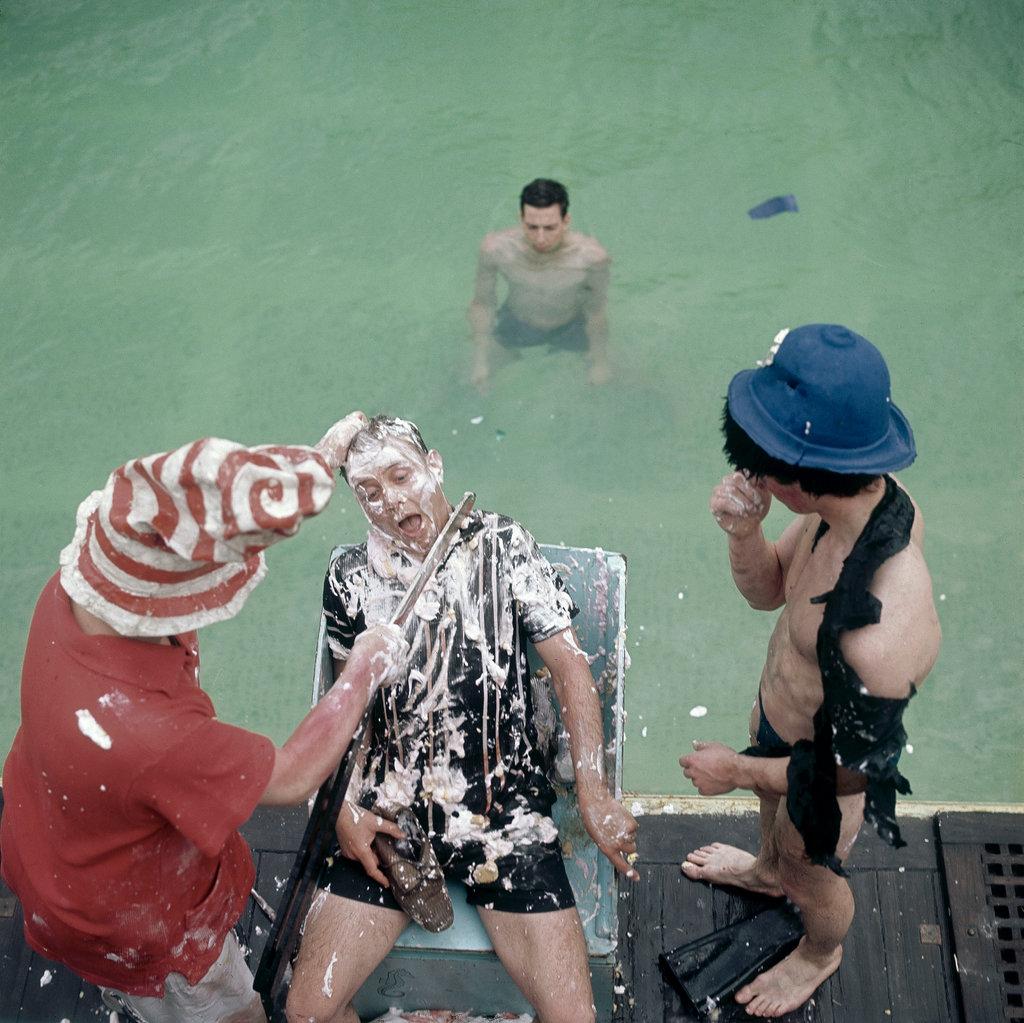
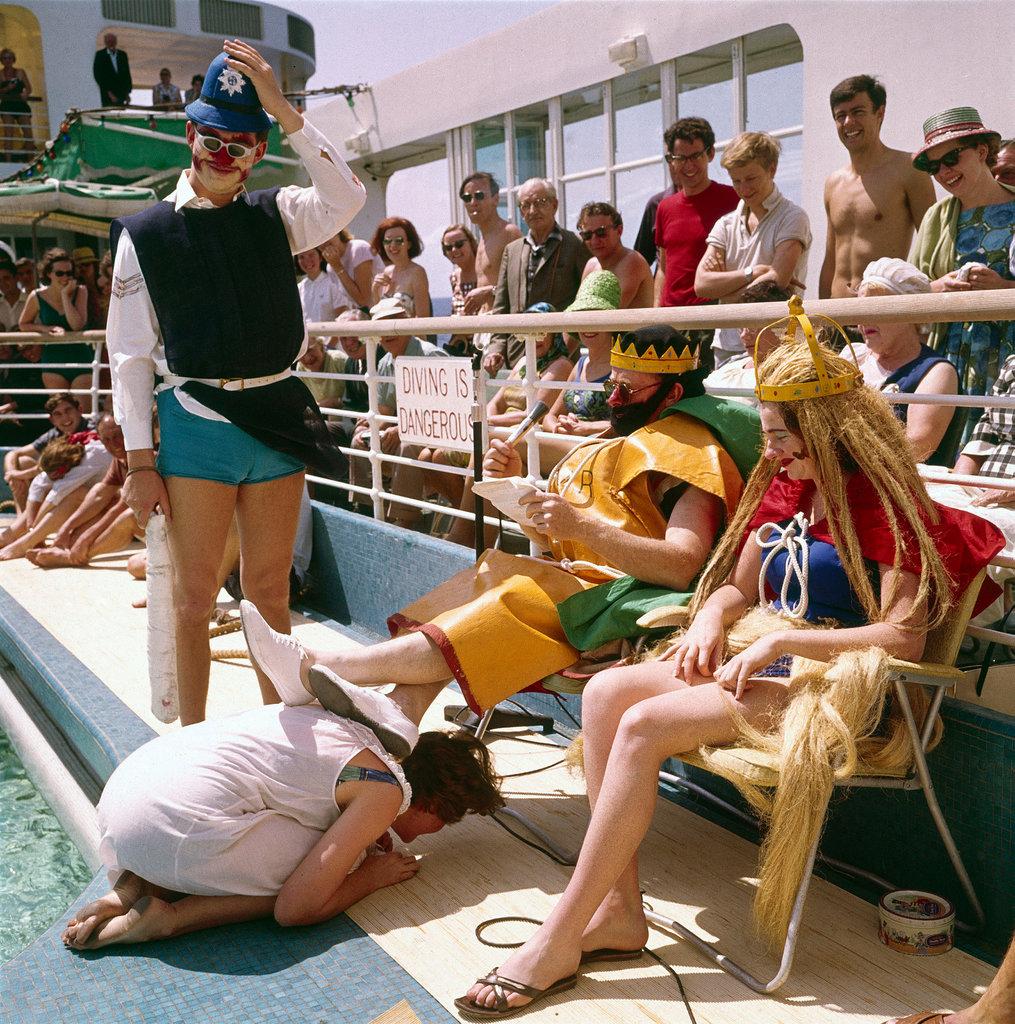
Cruise ships
With the increase in the cruise ship industry, post-war crossing the line became an activity for the entire family, with crews performing an almost pantomime-esque show involving the passengers.
Exit pursued by a bear…
As with many long-standing traditions, there are elements of which the origins are unknown.
Many elements are clearly nautical in nature, from Neptune to mermaids. However the inclusion of bears is a less expected element.
One interpretation is that the bears are meant to represent the constellations Ursa major and Ursa minor, however more than two bears feature in our photographic records.
Often missing from contemporary merchant navy accounts (but present in contemporary US Navy accounts), the bears seem to have played an enforcer role, and would be responsible for ‘encouraging’ inductees into the water for baptism. Current accounts often instead include people dressed as police officers, although photographs in our collection show that this isn’t a particularly new addition.
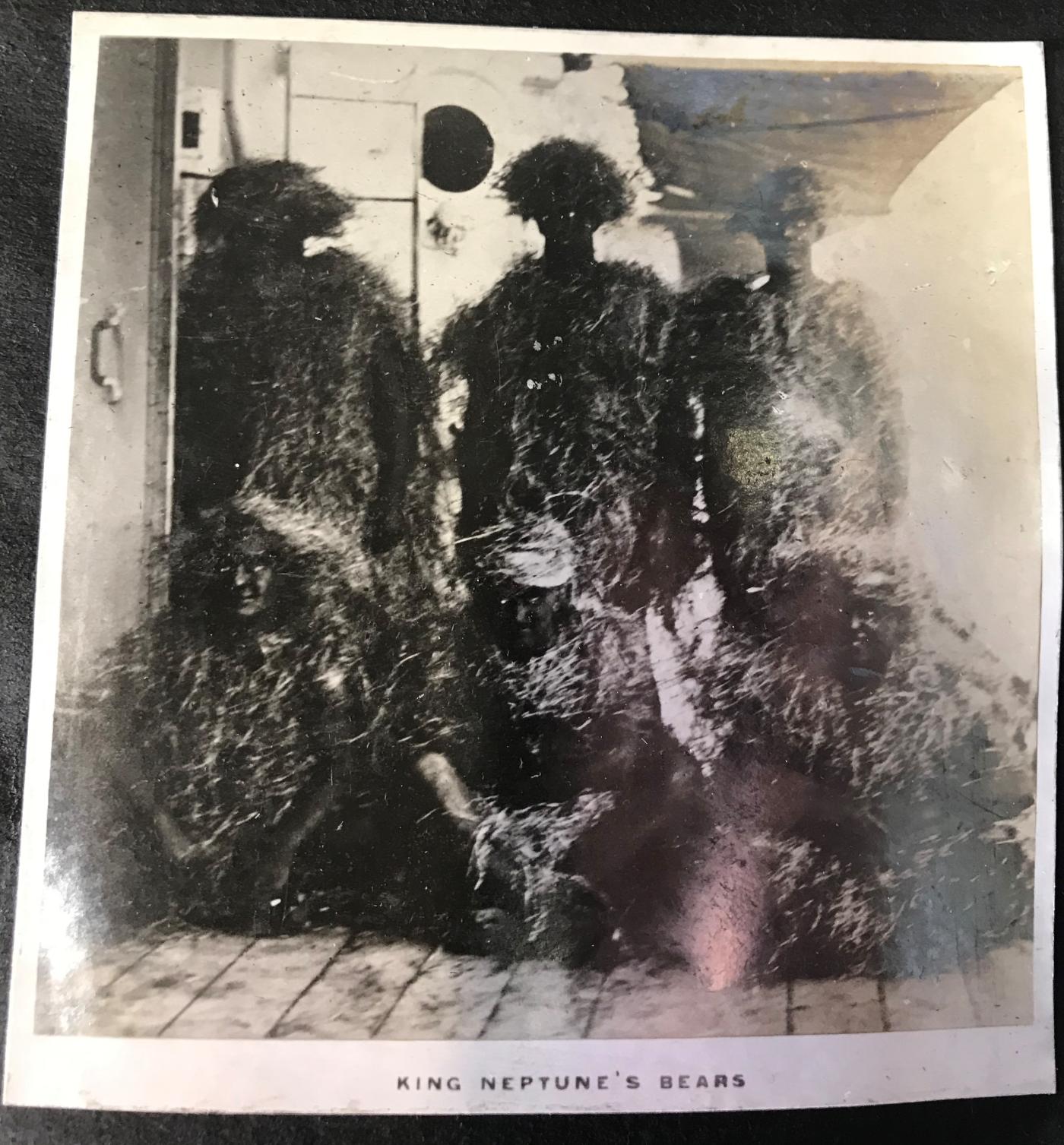
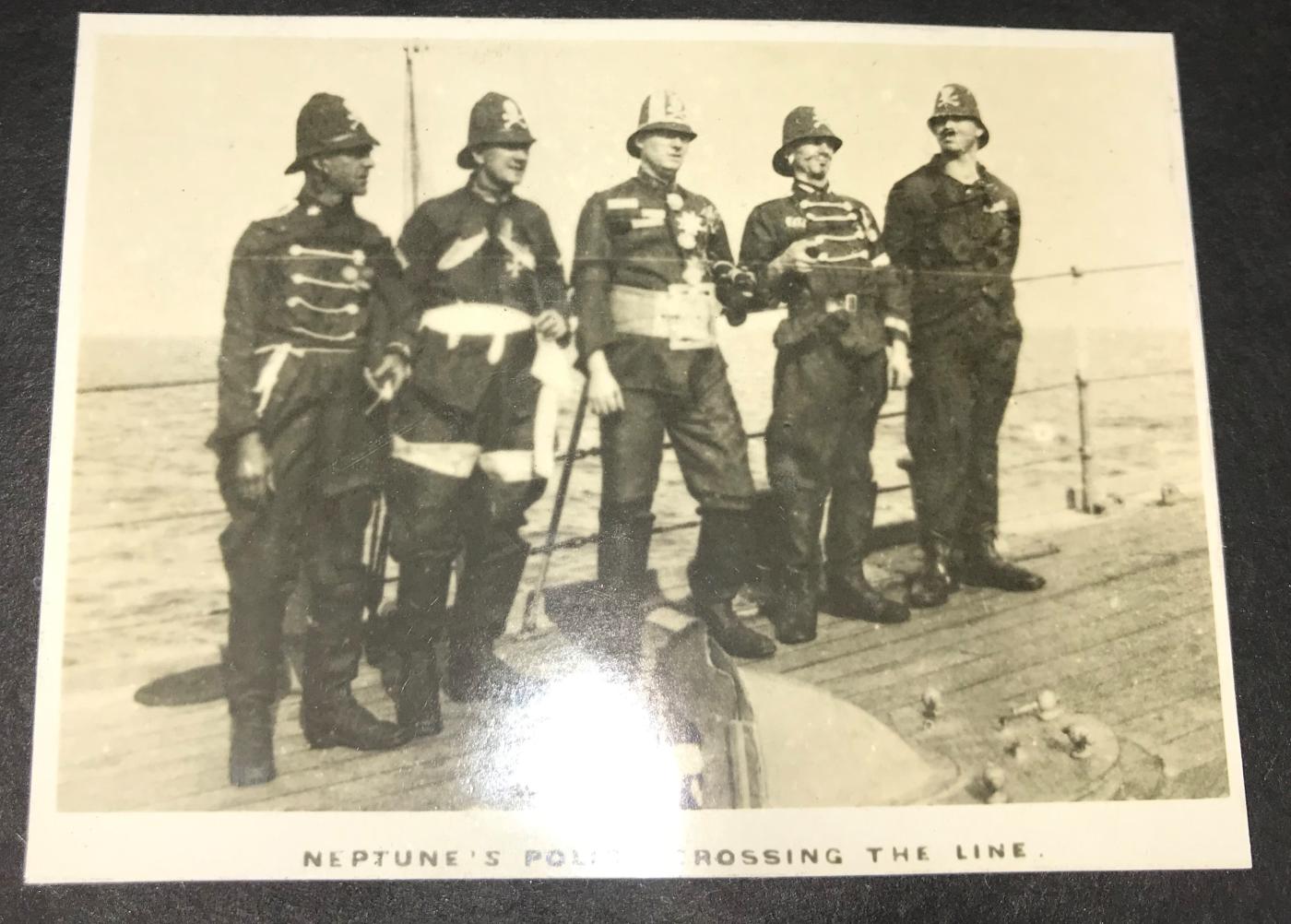
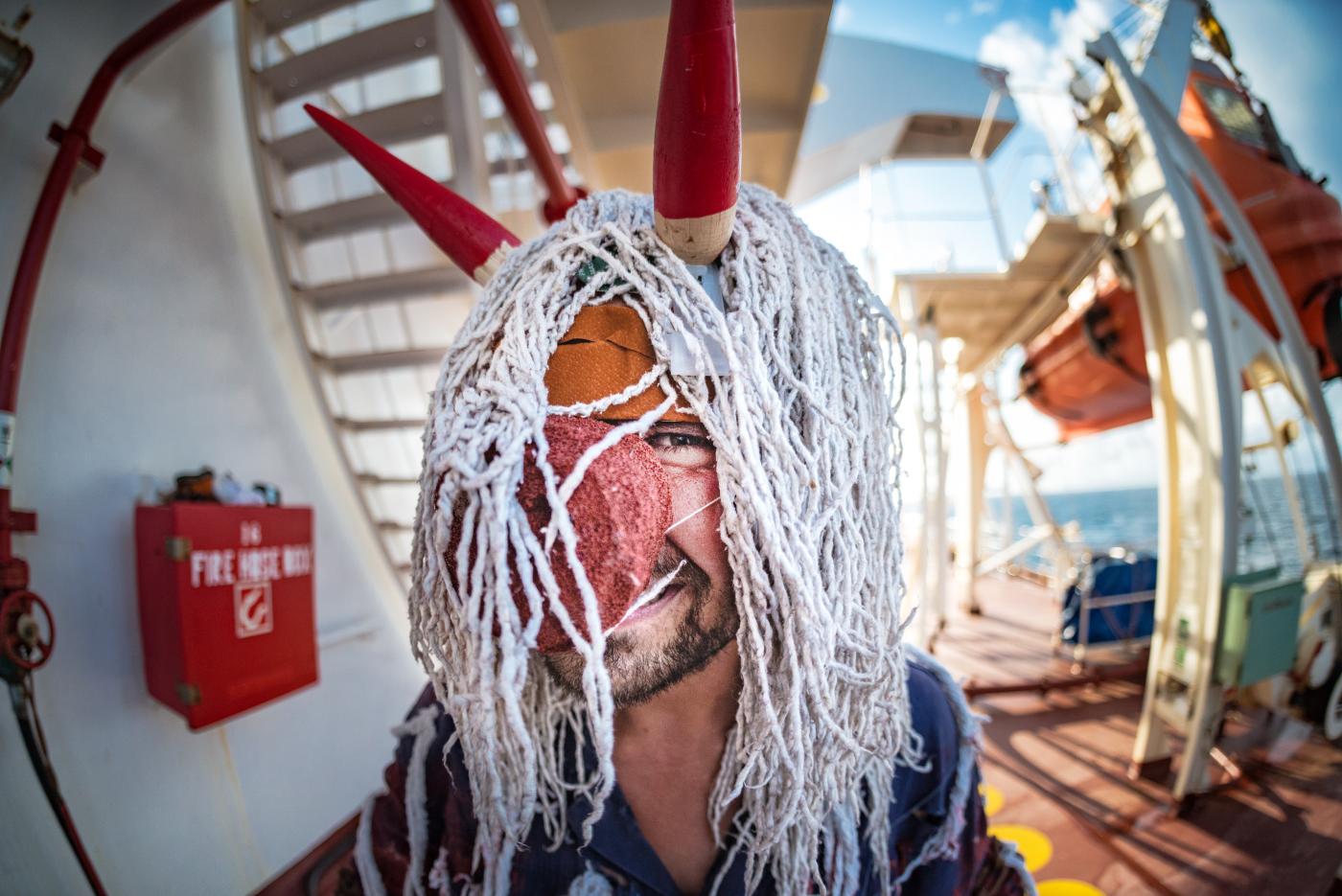
Despite its unknown origins, for many seafarers crossing the line remains an important rite of passage. Do you think you would be found worthy by Neptune’s court?
